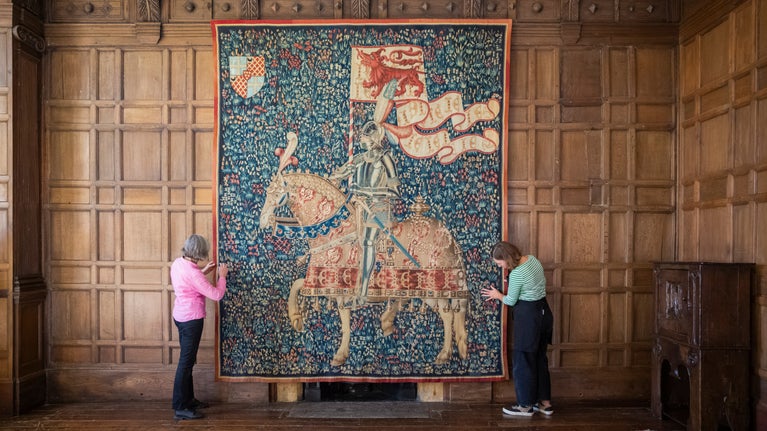
Preserving the past
From conserving historic works of art and delving into archaeology to supporting urban heritage and parks, find out about our vital conservation work.
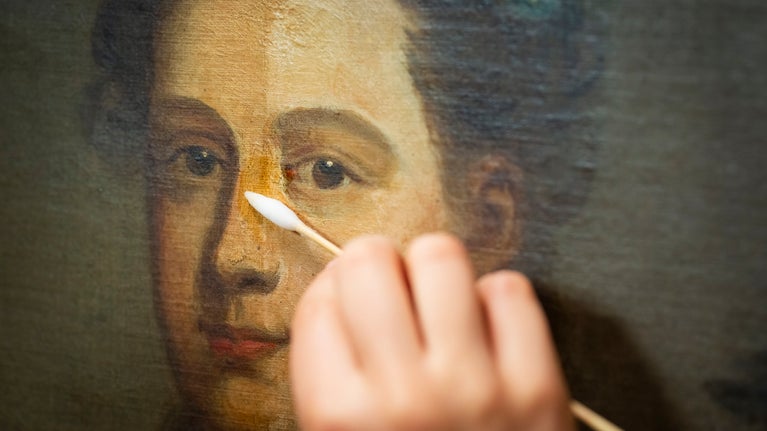
We look after more than one million historical objects from around 200 places, and their preservation, protection and conservation is at the heart of our work. Discover some of our favourite conservation projects from recent years and explore the techniques and expertise that are looking after the past, for the future.
Many of the historic items needing care are conserved in our two specialist in-house conservation studios, the Royal Oak Foundation Conservation Studio at Knole in Kent, and the Textile Conservation Studio at Blickling in North Norfolk. These studios are home to specialist conservation experts who cover a wide range of materials, including textiles, decorative arts, furniture, paintings, frames, ceramics and glass.
Dame Ellen Terry was one of England's most celebrated actresses of the late 19th and early 20th centuries, renowned for captivating her audiences with her performances in Shakespearean plays. Her countryside retreat, Smallhythe Place in Kent, was gifted to us in 1939 by Terry’s daughter, Edy Craig.
Today, Smallhythe houses many of Terry’s costumes from her 60-year career. Due to frailty and age, most of these fragile garments are kept in carefully regulated conditions that control light, temperature and humidity, but textiles are notoriously susceptible to pests.
Among the most iconic pieces is the Beetlewing dress, which Terry wore as Lady Macbeth in the Lyceum Theatre's 1888 production of 'Macbeth' – its silk velvet cloak alone required more than 450 hours of meticulous work at the Textile Conservation Studio.
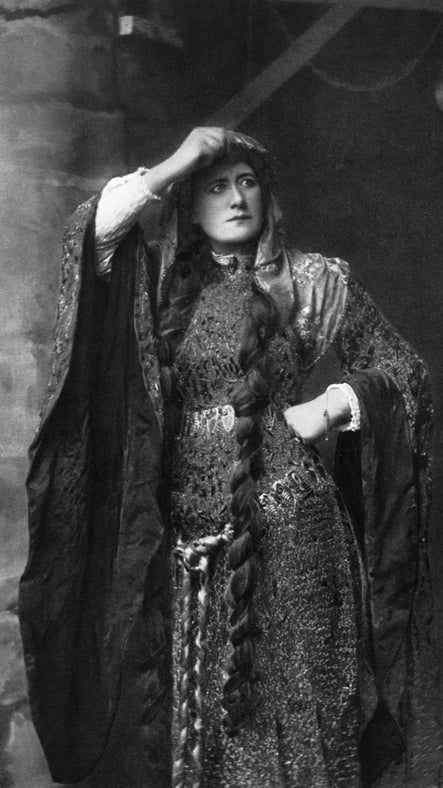
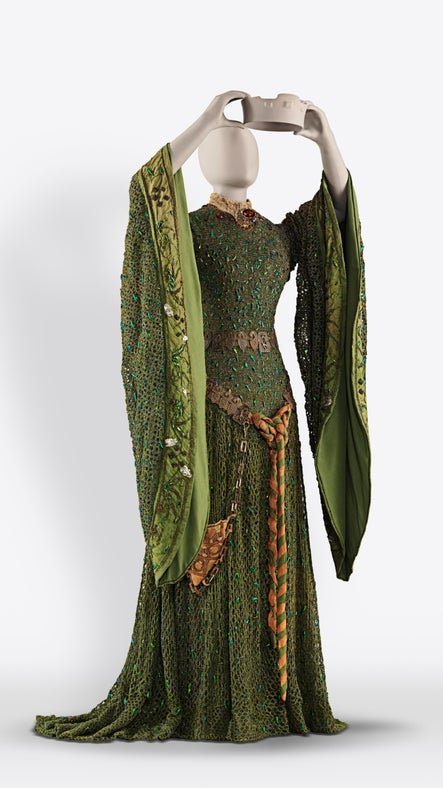
The dress takes its name from the more than 1,000 beetle wings that adorn it, creating an iridescent shimmer that made it an iconic piece in theatre costume history.
Several other pieces have also undergone conservation, including Terry’s costume from the 1891 production of ‘Much Ado About Nothing’, where she played Beatrice, and the Banqueting dress from a different scene in the 1888 production of ‘Macbeth’.
This 18th-century painting now at Castle Ward in County Down is the only known portrait of Lady Ann Bligh, Viscountess Bangor. She's thought to have played a pivotal role in designing Castle Ward’s iconic 1760s house and landscape.
While there were portraits of her husband and children around the house, Lady Ann had been missing for centuries – that was until 2024, when this portrait of Lady Ann was acquired for Castle Ward. No other known depictions of the Viscountess exist, which makes this painting invaluable for interpreting women’s history at the estate.
Before journeying to Castle Ward, the painting underwent expert treatment at the Royal Oak Foundation Conservation Studio. Conservators cleaned its surface, removed the discoloured varnish, and ‘consolidated’ – which means to secure loose fragments – fragile areas of paint.
Its gilded neoclassical frame, which was suffering from significant flaking, was also restored.
Beatrix Potter (1866–1943) was a beloved writer, illustrator, natural scientist and conservationist, and her farmhouse retreat, Hill Top in the Lake District, has been in our care since 1943. It’s filled with many treasures from Potter’s life, including an intricate dolls’ house.
Historic houses like Hill Top often struggle with damp and humidity, posing a significant challenge for fragile objects. To protect the dolls’ house, conservators worked on restoring the house itself and the 73 miniature objects inside it, which include dolls’ food and accessories featured in 'The Tale of Two Bad Mice'.

Experts at the Textile Conservation Studio treated the house's carpet, upholstered furniture and dolls’ clothes, while conservators at the Royal Oak Foundation Conservation Studio restored pieces of wooden furniture, ceramics, glassware and paper, such as wallpaper, watercolours and drawings. In total, the project took around 300 hours to completely conserve the house and its contents.
Snowshill Manor in Gloucestershire is famed for its eclectic collection, assembled by the eccentric architect, artist, poet and craftsman Charles Paget Wade. Among its many curiosities is a striking suit of samurai armour. Made around 1830, the armour includes a helmet, mask, throat and shoulder guards, sleeves, a cuirass (which covers the torso), and thigh and shin guards.
Japan had effectively abolished the samurai class by the late 19th century, and many samurai suits and weapons were sold, as this one was to Wade in the 1940s.
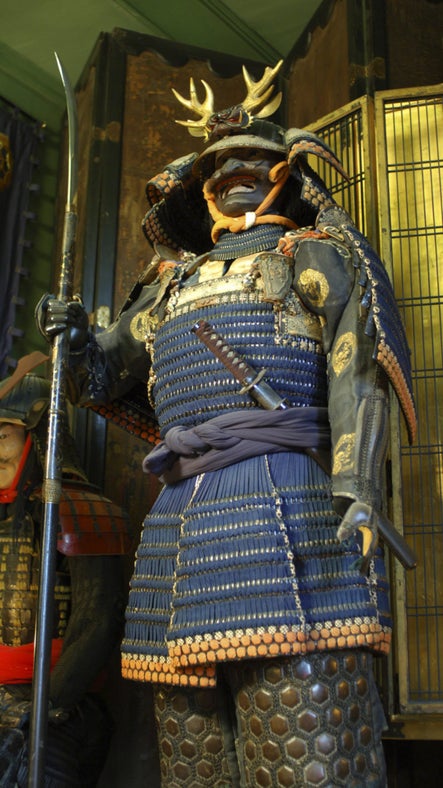
Expert conservators meticulously cleaned and applied specialist treatments to the armour, reattaching flaking lacquer and stabilising the lifting leather. They also surface-cleaned the rich fabric, infilled missing areas and applied conservation netting to support weak areas.
The State Bedroom at Erdigg in Wrexham was once only reserved for the most privileged guests. At its heart is a rare example of the ‘lit à la duchesse’ style, a grand bed which we think was created around 1720. The bed is draped in delicate Chinese silk satin, embroidered with delicate scenes of Chinese figures, pagodas, birds and flowers.
By the late 1960s, the bed had severely deteriorated – decades of coal mining subsidence had caused water to leak directly onto the bed, damaging the textiles. It was first conserved by the Victoria & Albert Museum in 1968 and reinstalled at Erdigg in 1977, and four years after the property came into our care.
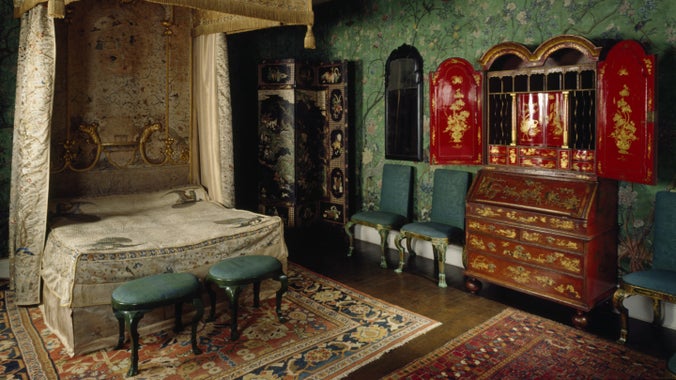
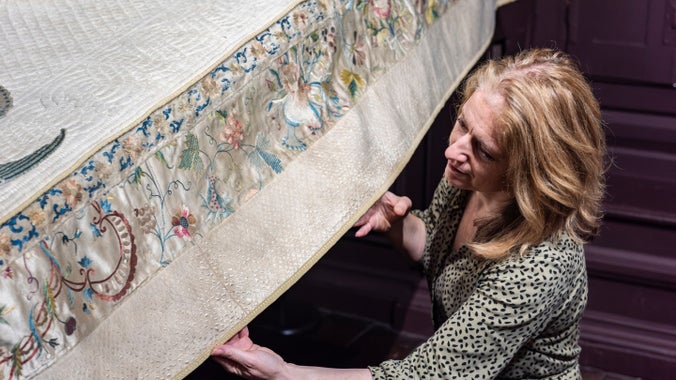
In 2018, we began an eight-year project to fully restore the bed after condition reports showed the original treatments were failing.
Research uncovered a fascinating story: the bed cover is made of textiles and embroidery techniques from across the globe, including British and Welsh fabrics. This makes the bed not only a masterpiece of design but a testament to international craftsmanship.
This gold-painted statue at Ightham Mote in Kent depicts Edward, Prince of Wales, eldest son of King Edward III of England. He's probably better known as ‘The Black Prince’, a name likely inspired by the black armour he wore.
Portrayed here helmeted and in full armour, a sword by his side and a lance in his right hand, the statue is a striking tribute to medieval chivalry.
It was originally created as part of an 1884 competition to decorate the newly built Blackfriars Bridge in London by French sculptor Édouard Lantéri. He submitted this half-sized sculpture to the competition, but sadly Lantéri's piece wasn't chosen and the full-sized sculptures were never made.
The statue was later collected by American businessman Charles Henry Robinson, owner of Ightham Mote in Kent, in 1956.
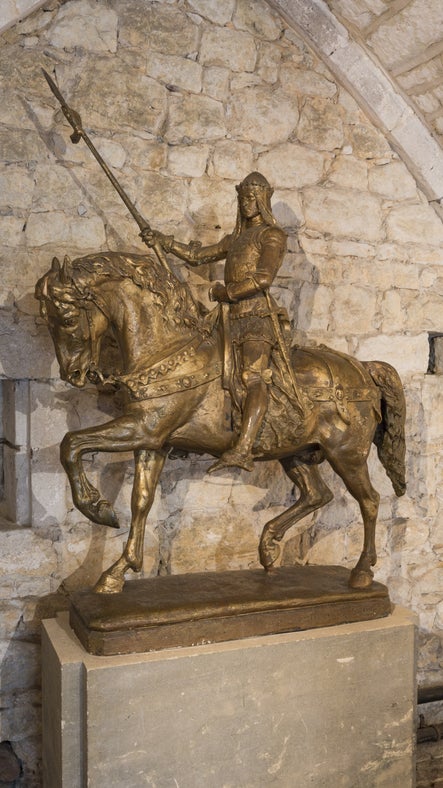
Originally on display in the Crypt, which proved to be too damp for the statue, it required conservation treatment at the Royal Oak Foundation Studio. This work included X-ray imaging to better understand the internal supports, consolidating the flaking paint layers, cleaning, filling open cracks and rebuilding lost areas – such as the horse's tail.
For more than 130 years, generations of people have helped us to look after nature, beauty and history – making the above projects and hundreds more possible.
With your support we can continue this vital work, and preserve precious places for everyone, for ever.

From conserving historic works of art and delving into archaeology to supporting urban heritage and parks, find out about our vital conservation work.
Interested in other types of conservation? Learn about how we protect the rare and historically significant plants in our care at the Plant Conservation Centre.

For 130 years, people like you have helped us look after nature, beauty and history. Donate today, and together we’ll preserve precious places for everyone, for ever.

With more than one million items in our care, discover the vital role our conservation volunteers play in preserving the collections at more than 200 places.
